Disclosure: We may get commissions for purchases made through links in this post.
Gravel grids are a popular type of flooring for driveways. They provide much better traction than grass and can also be used on different surfaces. As a new homeowner, you might want to install gravel grids but wonder how it works or if it's worth it. To help answer your question, we have consulted experts in the industry, and here's what they have to say.
Yes, gravel grids work in keeping your gravel in place and can be very helpful to those who have their driveway or garden in sloppy areas. Gravel grids also help to control flash flooding by reducing rainwater runoff. Gravel surfaces for your home are easy to install and are cost-efficient with the use of gravel grids.
While using gravel grids as a base system design comes with lots of benefits, some factors need to be considered during installation. Continue reading to discover more details on gravel grids and why you should install them in your homes.
![new modern car park gravel base with installed green plastic grid and white plastic lines, Do Gravel Grids Work? [Incld On A Slope]](https://pavingplatform.com/wp-content/uploads/2022/04/Do-Gravel-Grids-Work-Incld-On-A-Slope.png)
How Gravel Grids Work
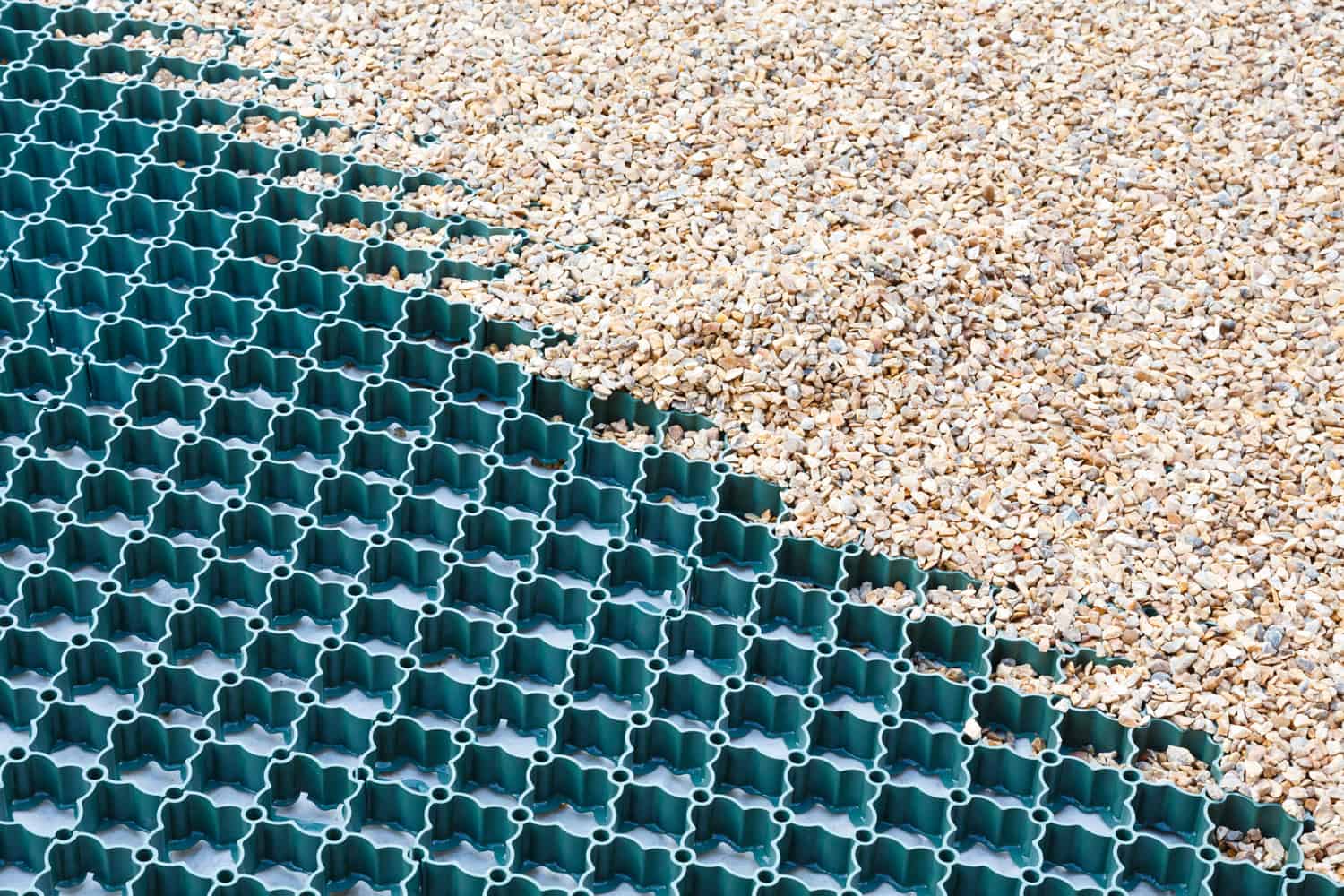
The primary uses of gravel grids for driveways, lawn and/or patio, and walkway areas include the following:
Gravel grids are used to stabilize gravel
Gravel tends to move when a lot of pressure is applied to them. You can support your patio, lawn, driveway, or walkway with the use of gravel grids that hold the gravel in place, thereby reducing shifts. They prevent gravel from moving into flower beds and areas they are not meant to be.
Gravel grids can help limit rainwater runoff
Runoffs have become a major concern whenever torrential rainfall occurs. But the porous ground surface created when gravel is used allows the drainage of rainwater in a more natural way, which can help in reducing runoff. Gravel grids aid this process by prolonging the rainwater's time to reach the water table.
The grid also limits the amount of sediments rainwater carries during movement, thus curbing the impact of flooding.
How Do You Install A Gravel Grid?
When installing gravel grids on your driveway, patio or walkway, make sure to follow these best practices:
1. Create a good base underneath
Having a good base will prevent the gravel from sinking into the ground. It would also make it easier to maintain the surface with minimal upkeep. A good base is usually made up of sand, soil, and stone dust mixed with water until it becomes thick enough to stay in place when dry.
2. Always make sure your edges are well bound on every side
When your edges are properly bound, the chances of damage to your grids are low. This is one of the crucial parts of gravel grid installation as it determines how long your gravel grids will last. Mistakes at this point may cause the stones to spill out.
3. Ensure that the appropriate size of infill material is used
The drop height of your infill material should be no more than 3.28 feet. Also, make sure that your infill material is adequately arranged to avoid lifted cells. While filling each cell, it is advisable to fill and spread them equally using a shovel or rake.
There are different types of gravel with dissimilar sizes that you can use to fill your gravel grids, but it's better to choose the right size of gravel, depending on where you are working on. For driveways and walkways, it's best to use pea gravel.
If you desire a natural-looking driveway, you can also consider using crushed granite (decomposed granite). Creek stones can also be used on walkways, patios, and driveways.
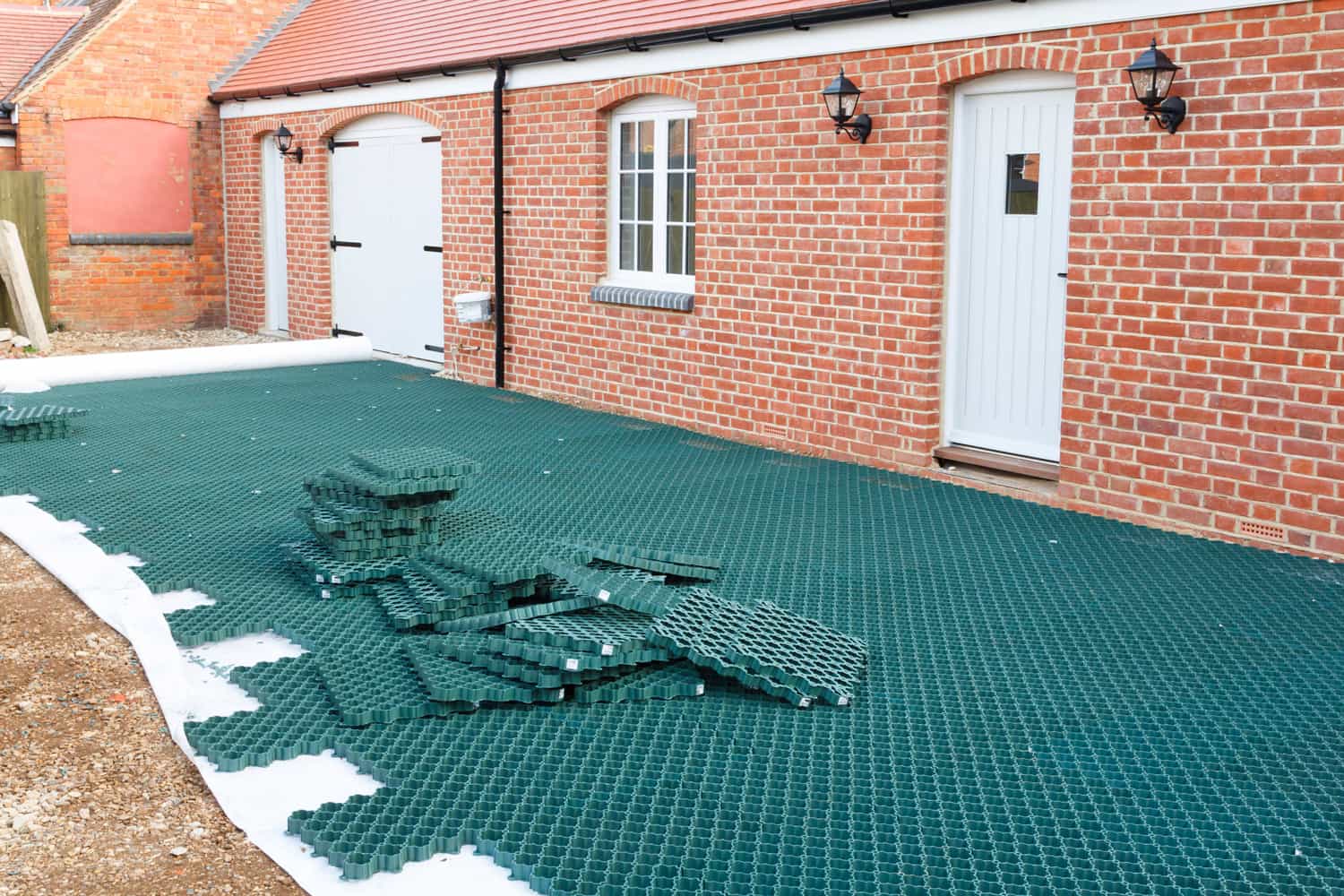
Is Installing Gravel Grids Worth It?
Yes, gravel grids are worth installing, especially with their positive sides that outnumber the downsides.
Benefits
- Gravel grids are easy to install (in any weather) and require less maintenance. This makes them ideal for people who don't want to spend their time shoveling or scraping ice off their driveway daily. Since gravel grids are permeable and easy to clean, they are a great alternative to other types of hard surface materials like concrete or asphalt.
- Gravel grids are usually made from natural stones, which makes them durable.
- They are among the affordable base system designs.
- Gravel grids can be installed on any type of surface.
- This type of flooring provides good drainage so you don't have to worry about water pooling on the surface, which may cause damage to your home's foundation or siding.
- They can benefit people living in a sloppy area as they serve to keep the gravel in place.
Drawbacks
- Gravel grids can be slippery if they get wet or when it rains.
- They can be difficult to walk on if not properly installed, so it's important to ensure that the base is well leveled before laying down the gravel grid.
- When going for a more traditional look outside your home, gravel might not be the best option.
Taking Care of Your Gravel Grids
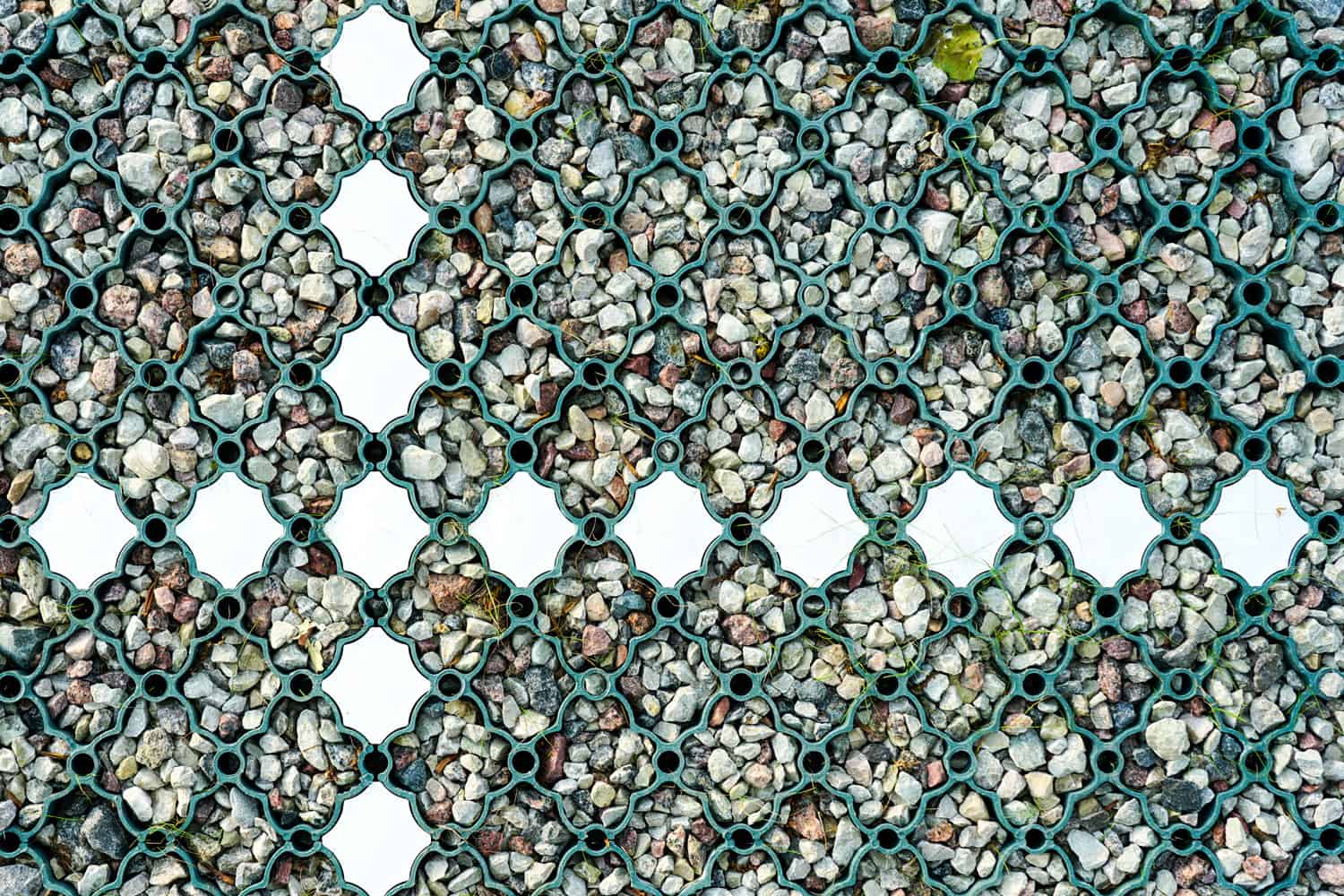
To keep your gravel grid in good shape, you need to remove any weeds that sprout up from time to time and rake it once or twice a year. Gravels can eventually break down if they are not well taken care of, so they should be maintained.
Always be mindful of debris that accumulates on top of the gravel grid and make sure you clean them up. This will prevent the growth of weeds, making it easier for you to maintain the rest of the area around the gravel grid.
Gravel Grid on Slope
As a homeowner, you may want your gravel to stay stable on sloppy areas of your home. This can be achieved when gravel grids are installed. Gravel loss can be prevented when gravel grids are used on any sloping surface. Using decorative gravel for sloppy areas can be problematic, but with good gravel retention grids, a gravel slope can be effectively stabilized. Also, the development of ruts and potholes can be prevented when gravel grids are installed on sloping surfaces.
Best Gravel Grids
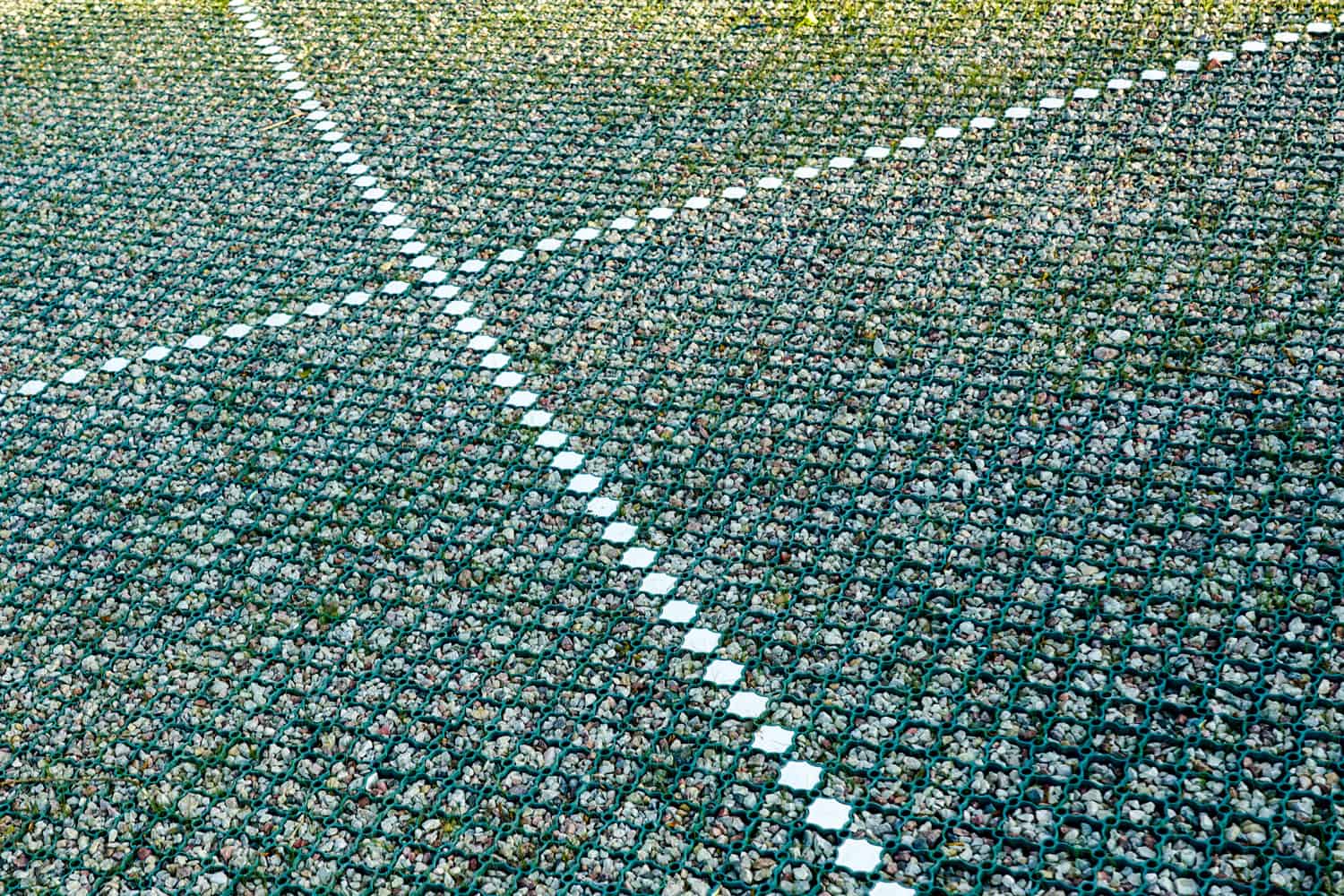
- HEXpave Permeable Grid - A 1-inch depth system made of recycled polymer, this gravel grid can be used with small pea gravel. The snap and lock connection makes installation simple enough for your DIY patio, walkway, shed base, light vehicle driveway, and many more!
Click here to see this product on Amazon.
- TRUEGRID PRO LITE - This easy-maintenance 1-inch dept grid is rated for more than the weight of a motorhome vehicle. Laying the TRUEGRID may require prior installation of a base depending on the conditions of your soil. You can fill it with gravel to get that natural, robust paving. It's tough enough to accommodate cars and trucks.
Click here to see this gravel grid on Amazon.
- Standartpark Thick Geo Grid - Perfect for driveway installations on slopes and/or flat areas, this geo grid is ideal for landscaping and anything that necessitates withstanding a heavy load! The easy-to-install material is made from polyethylene which stands the test of time. You can fill it with any type of aggregate or filling of your preference!
Click here to see this product on Amazon.
In Closing
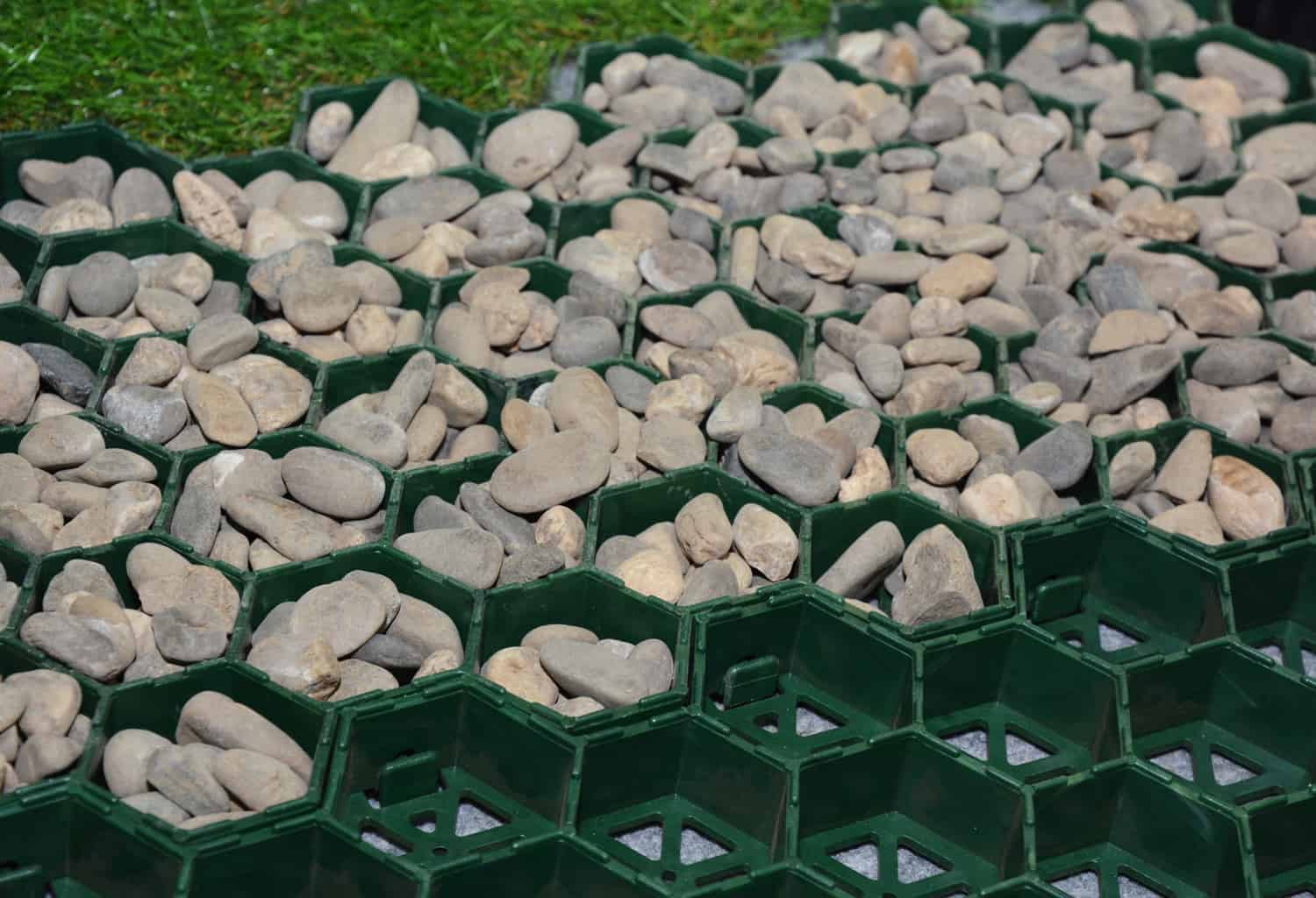
Gravel grids are an important component of a gravel driveway, lawn, patio, or walkway area. They provide a stable surface for the gravel and ensure that it does not get displaced by the weight of vehicles. The installation of a gravel grid requires careful planning and execution so that it can be placed at the right height and width.
Gravel grids are typically made out of metal and they come in different shapes and sizes depending on what you need them for. The type of grid you should choose will depend on your budget as well as how much weight it needs to carry.
If you have enjoyed reading this post, check out other similar articles about gravel:




![Vibrant Red Paver Stone Path, Can You Spray Paver Sealer? [How To Apply It]](https://pavingplatform.com/wp-content/uploads/2022/04/Vibrant-Red-Paver-Stone-Path-600x400.jpg)
![Properly laid out red pavers for a garden, Can You Tint Paver Sealer? [And How To]](https://pavingplatform.com/wp-content/uploads/2022/04/Properly-laid-out-red-pavers-for-a-garden-600x400.jpg)
